Beshbarmak (Бешбармак) is a dish enjoyed throughout Central Asia as well as regions of Russia and China. It consists of boiled meat served on a bed of thick, flat noodles and covered in an onion sauce called tuzdyk (туздык). A meal both hearty and delicious, beshbarmak is particularly popular in Kazakhstan and Kyrgyzstan where it holds the privileged position of a national dish. It requires but a few ingredients to prepare, typically feeds an entire party, and, depending on how traditional one wants to be, does not even require eating utensils!
How Beshbarmak Got Its Name
(Почему так называется?)
The name “бешбармак” is a combination of just two words, “беш” (besh) and “бармак” (barmak) which translate as “five” and “fingers,” respectively. Combined, it describes the traditional way in which the meal is eaten: with the hands. This and the simplicity of “бешбармақ” both speak to the long history of mobile pastoralism practiced throughout the region, lives spent on the move between seasonal grazing grounds, and the people’s dependence upon their animals for sustenance.
Kazakh, Kyrgyz, and most other major languages of Central Asia are Turkic in origin. The dish is thus known by similar names across the cultures that traditionally eat the dish. For example, the number five in Kazakh is “бес” (bes) and the meal is sometimes, though not typically, called “бесбармақ”. The “қ” at the end of the word is unique to the Kazakh alphabet. In Uzbek and Kyrgyz, the number five is “беш” and the dish is thus called “бешбармак” (beshbarmak). In the Bashkir and Tatar languages, one would eat “бишбармак” (bishbarmak).
Central Asia also occupied a prominent role along the Silk Road. In the Chinese region of Xinjiang, which today boasts a large ethnic Kazakh population, бешбармак is called “нарын” (naryn) in Chinese. Naryn refers to a city, river, and region in Kyrgyzstan. It was also the original name of the food, before “beshbarmak” was first applied to the food during the Soviet era. The new name was originally something of a joke, however, it soon stuck and became the standard. The original, however, naryn, perhaps best reflects the ancient and deep roots that this food has within Central Asian cultures, as it is a name that connects it the food to the wider land and identity of the people.
Lastly, while these are the most common names one would encounter on a trip abroad, some traditionalists, particularly in Kazakhstan, will say that beshbarmak is not actually the name of the dish but only the style in which it is intended to be eaten. They instead call it simply “Ет ” (yet) which translates to simply “meat.”
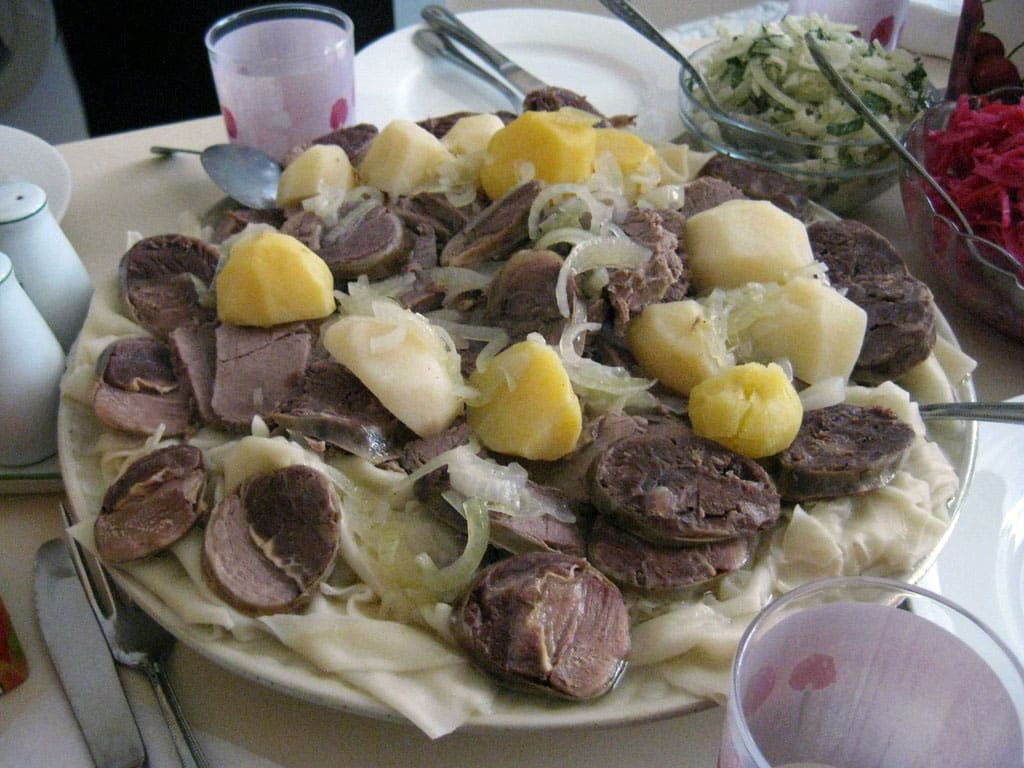
How and When Beshbarmak Is Eaten
(Как правильно есть бешбармак?)
While beshbarmak is a delicious meal to eat anytime, most people will tell you that it is difficult to prepare in small portions. Beshbarmak is typically cooked for large gatherings and served family style on platters placed in the center of the table. As a staple of their culture, Central Asians are quite hospitable people and take great pride in their history and traditions. It is not uncommon for guests to be served first with the best cuts of meat though in their absence, this honor is reserved for the eldest in attendance. If you are lucky enough to partake in meal of beshbarmak and find yourself squeamish about using your hands to eat, fret not, utensils are a perfectly acceptable alternative though at least an attempt to eat with your five fingers will surely elicit a great deal of respect from those at the table.
For those who find themselves in Kazakhstan without a local chef, beshbarmak can be ordered at restaurants specializing in traditional cuisine.
You can also read much more about Kyrgyz cultural traditions and thought surrounding beshbarmak in this article, also on our site.
Preparing Traditional Beshbarmak
(Как правильно готовить бешбармак?)
Beshbarmak can be prepared in a number of ways depending on the type of meat one would like to include in the dish. The most traditional form of the meal is cooked using horse meat, although beef and lamb are common substitutions. Pork and chicken are not recommended. For those looking to go truly authentic, horse meat sausage called “казы” (kazy) is cooked along with the other cuts.
Outside of Central Asia horse meat can be difficult to come by. In fact, some western countries have banned the sale and consumption of horse meat altogether. During the 2012 Olympics in London, the Kazakh national team had to petition the UK government to allow them to bring kazy with them, arguing that it kept them fit and healthy for competition. In addition to beef and lamb, beshbarmak in western Kazakhstan, where people have access to the Caspian Sea, is often prepared using fish. Sturgeon is preferred but salmon and trout are also acceptable.
In addition to meat substitutions, the dish can be altered slightly with additional vegetables. Popular choices include carrots and potatoes.
The only other aspect of preparing beshbarmak that requires mention here is the noodles. Whether one chooses homemade or store-bought is entirely a personal preference, they should be square or rectangular in shape to allow for easy grabbing – the recipe below calls for diamond shapes. If you happen to be in Kazakhstan’s Kyzylorda region, though, expect to find your beshbarmak meat resting upon a bed of rice rather than noodles, a regional variation that exists due to the abundance of that grain in that area. Other regional variations tend to be almost indiscernible to those without deep knowledge of the food. For instance, the difference between Kazakh and Kyrgyz beshbarmak is really only that you are more likely to find the onion sauce a bit thicker in Kyrgyzstan than you would in Kazakhstan.
However one chooses to prepare beshbarmak, the most important thing to keep in mind is to make a lot and invite friends and family with whom to feast. Never fear making too much, either. The largest serving of beshbarmak, prepared in Bishkek, Kyrgyzstan in 2018, weighed in at just over 3,200 lbs. – and all of it was eaten!
Let’s Cook!
(Давай приготовим!)
| Казахский Бешбармак
Состав • 1,5 кг мяса
Бульон • Отмойте мясо холодной водой, разрежьте его 3–4 примерно одинаковые части. Тесто на лапши • Поместите муку в миску Бешбармак: завершающий этап • Выньте мясо из бульона. Разделите его по волокнам (руками) на небольшие кусочки. Подавайте бешбармак на общем широком блюде или подносе с высокими стенками. Вниз положите отваренное тесто, на него ломтики мяса, а поверх — лук. Приготовленный бульон подайте отдельно. Ешьте, пока бешбармак не остыл. |
Kazakh Beshbarmak
Ingredients • 1.5 kg of meat. (1 kg is approximately 2.2 lbs.) Broth • Wash the meat with cold water, cut it 3-4 roughly equal parts. Dough for noodles • Place flour in a bowl Beshbarmak: the final step • Remove the meat from the broth. Divide it by the fibers (by hand) into small pieces. Serve beshbarmak on a shared wide platter or high-sided tray. Put boiled dough down, slices of meat on it, and onion on top. Serve the cooked broth separately. Eat while the beshbarmak is warm. |
The recipie below from Kyrgyzstan was contributed by Genevieve Gunow, an SRAS graduate who married her Kyrgyz fiancée while abroad (read their story here) and so spent her semester also under the tutelage of her future mother-in-law, in a traditional process that is meant to pass down recipes and domestic skills.
| Кыргызский бешбармак | Kyrgyz Beshbarmak |
Ингредиенты
Приготовление мяса: Вскипятите воду (5 чашек). Добавьте 2 чайные ложки соли. Порежьте лук тонкими кружками. Добавьте в воду ягнятину и лук и варите мясо в течение двух часов. Через два часа выньте мясо и порежьте его на полоски. Приготовление лапши: Смешайте муку с солью. Добавьте яйцо. Добавляйте воду до тех пор, пока образуется единая масса, но не клейкая. Дайте тесту постоять 10 минут, и затем раскатайте его до слоя 6 мм. Порежьте тесто на тонкие полоски (шириной около 6 мм). После того, как мясо приготовлено и удалено из воды, добавьте в воду лапшу. После приготовления мяса в воде, получится мясной бульон, который придаст лапше дополнительный вкус. Кипятите лапшу пять минут. Чтобы сделать вкус блюда еще богаче, вы можете добавить еще несколько кружков лука, и кипятить их с лапшой еще пять минут. Через пять минут выньте лапшу и лук, но оставьте бульон. Смешайте мясо, лапшу и лук в глубокой тарелке. Добавьте четверть чашки бульона, чтобы придать лапше дополнительный аромат. Блюдо можно подавать на стол. Когда киргизы едят бешбармак, они пьют оставшийся бульон из чайных чашек как прекрасное дополнение к блюду. |
Ingredients
Preparing the meat: Boil 5 cups of water. Add 2 teaspoons salt. Slice the onion into thin circles. Add the lamb and onion to the water and continue to boil the meat for two hours. After two hours, remove the meat and cut into strips. Preparing the noodles: Mix the flour with the salt. Add the egg. Stir in warm water until the mixture holds together but is not sticky. Kneed the dough for five minutes. Let the mixture sit for 10 minutes and then roll out the dough until it is ¼ inch thick. Cut the dough into thin strips (about ¼ inch wide). Once the meat has finished cooking, and has been removed from the water, add the noodles. Cooking the meat in the water will create a meaty broth, which will give the noodles extra flavor. Boil the noodles for five minutes. For additional flavor, you can add some more onion slices at this time, letting them boil with the noodles for five minutes. After five minutes, remove the noodles and onions while saving the broth. Combine the meat, noodles, and onion in a bowl. Pour ¼ cup of the broth on top of the noodles, giving them extra flavor. The dish is now ready to serve. While eating beshbarmak, the Kyrgyz drink the remaining broth in tea cups, which complements the dish nicely. |
Our Favorite Beshbarmak Videos
A great video from Kazakh TV in which a guest circus performer, Мурат Мутурганов, joins the host of a cooking show to not only demonstrate how to prepare beshbarmak, but also discuss some of the culture, history, and tradition in making the dish.
Join these three Kazakh women as they prepare Kazakhstan’s national dish, beshbarmak, and share their secrets to creating the most delicious feast.
Ever wonder how to make a 1.5 ton serving of beshbarmak? Look no further! Enjoy this video from 2018 when Bishkek, Kyrgyzstan made its way into the Guinness Book of World Records for the largest serving of beshbarmak ever made! The majority of the video is in Russian, but you will also be treated to a bit of Kyrgyz as well.
https://www.youtube.com/watch?v=-OsFsVVsCJY
More About Beshbarmak
If you are interested in learning more about beshbarmak, see this article about Kyrgyz cultural traditions and thought surrounding beshbarmak, also on our site. More on Central Asian food traditions and recepies can also be found on our site.
Of course, one of the best ways to experience Central Asian culture (and try traditional beshbamak!) is to immerse yourself in it in Central Asia. Students on SRAS study abroad programs in Central Asia can learn language, history, geopolitics, and more, all with an extensive cultural program.
You Might Also Like
For those obsessed with all things pumpkin — pumpkin pie, pumpkin ice-cream, pumpkin-spice lattes — oromo (оромо) is sure to please. Oromo is a rolled, layered, steamed pastry that comes with various fillings (pumpkin being common and our favorite). It evokes everything we love about pumpkin season back home in the States. This main dish […] Central Asia’s rich tradition of carpet weaving reflects the region’s history, culture, and identity. From the ancient nomads of the Pazyryk Valley to the artisans of Kyrgyz yurts and the urban weavers of Samarkand, carpets have long served both practical and symbolic functions. Their materials, techniques, and motifs reflect centuries of interaction between nomadic and […] The Talking Phrasebook Series presents useful phrases and words in side-by-side translation and with audio files specifically geared to help students work on listening skills and pronunciation. Below, you will find several useful phrases and words. To the left is the English and to the above right is an English transliteration of the Kyrgyz translation. […] Kyrgyz cuisine reflects the country’s heritage of pastoral nomadism. Life was spent moving livestock from pasture to pasture and living in collapsible, transportable yurts. The livestock themselves were the primary, sustainable food source. Everything else was either gathered from the land or traded for. The Kyrgyz did not engage in intensive settled agriculture until forced […] There are few essential things to know about Kyrgyzstan. One of these is the country’s folkloric hero, Manas. You’ll find nearly everything in Krygyzstan is named after him: the main airport, national parks, major streets in nearly every city and town, and even karate clubs and movie theaters, not to mention the statues of him […]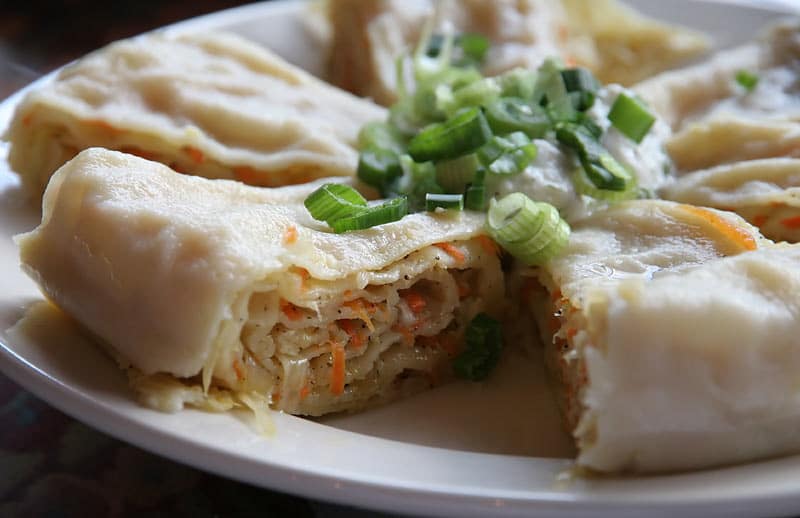
Oromo, Orama, Khanum: A Turkic Pumpkin Delight
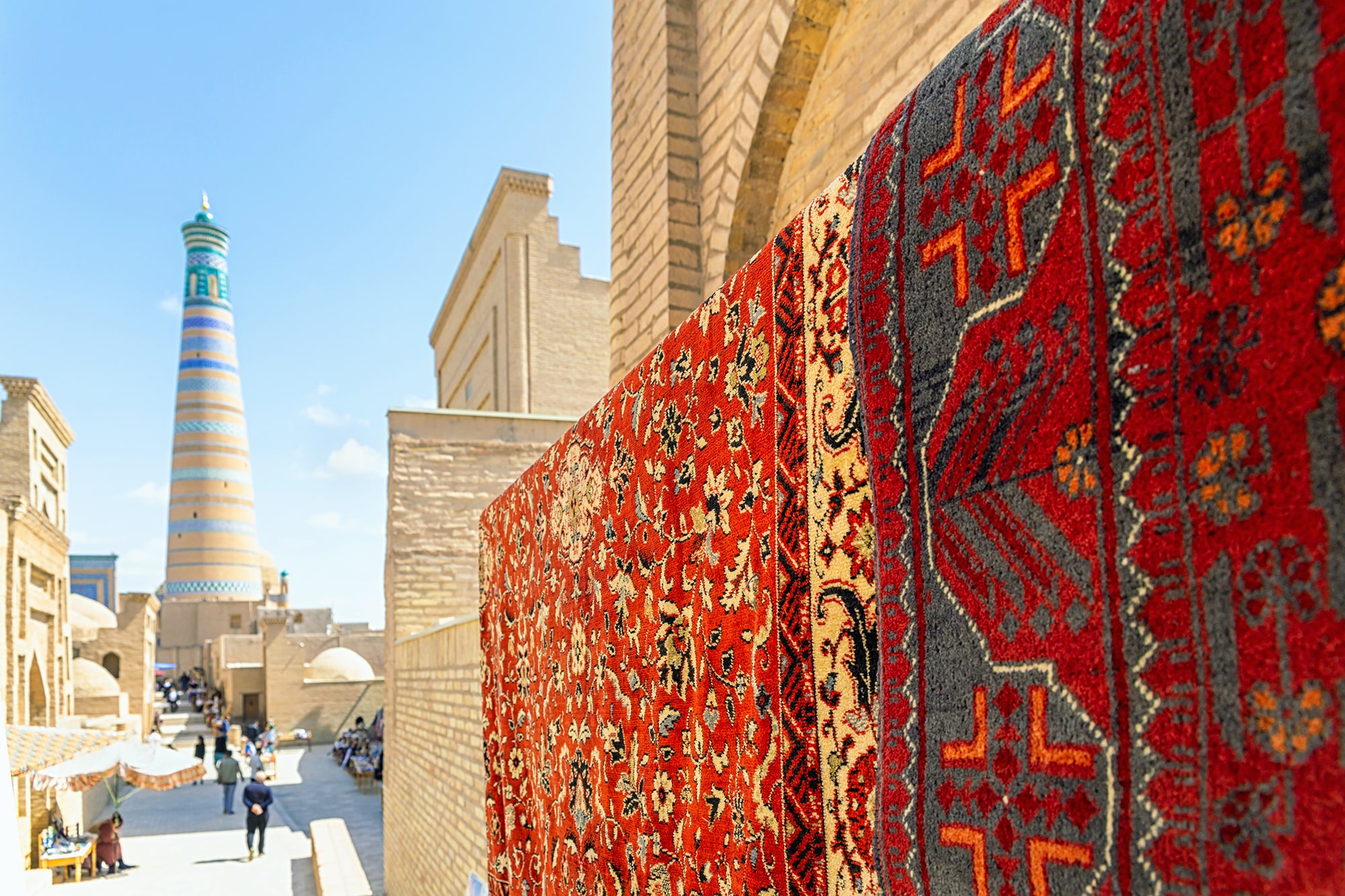
Knots of Culture: Central Asia’s Carpet Weaving Heritage
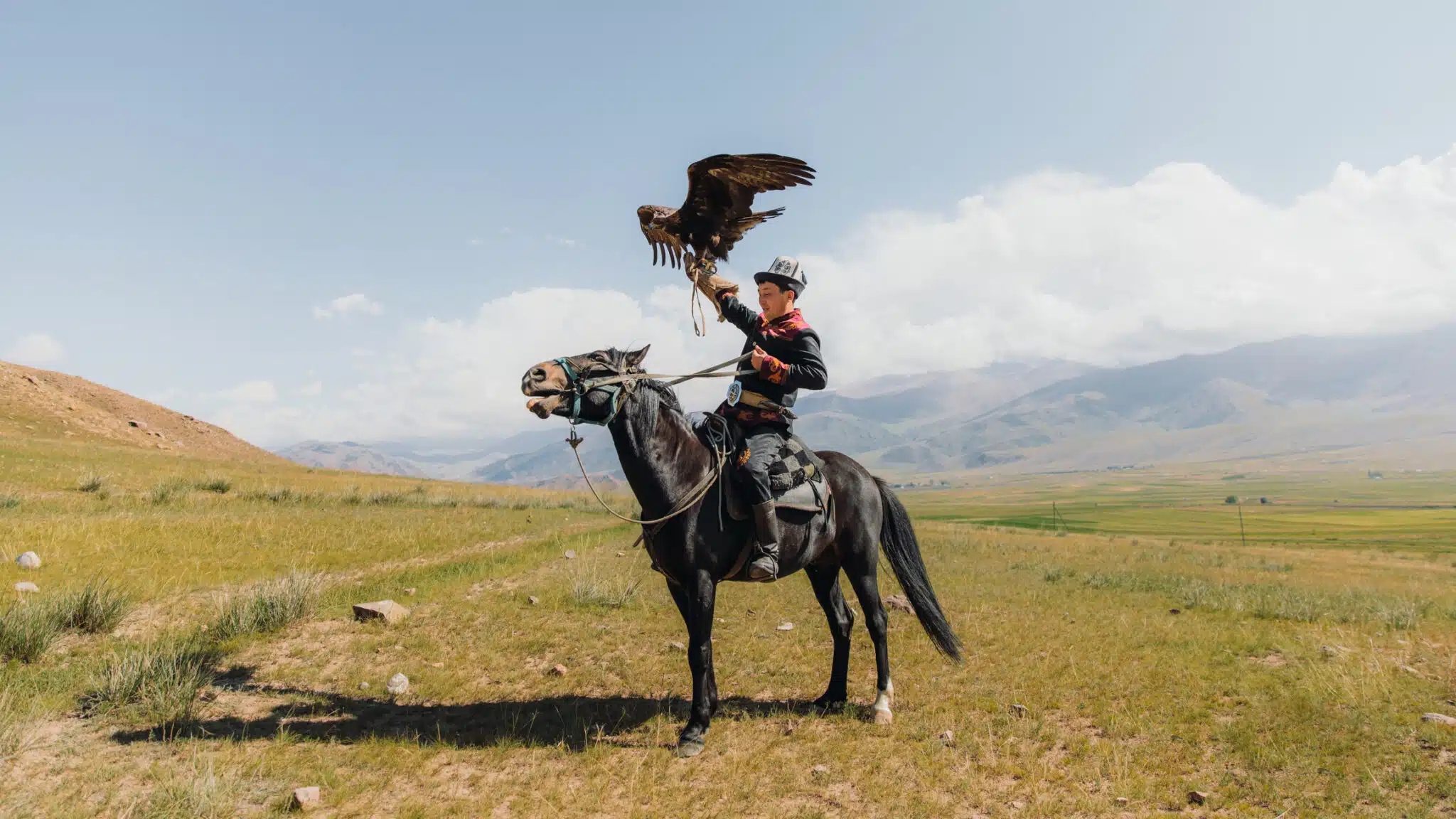
The Talking Kyrgyz Phrasebook
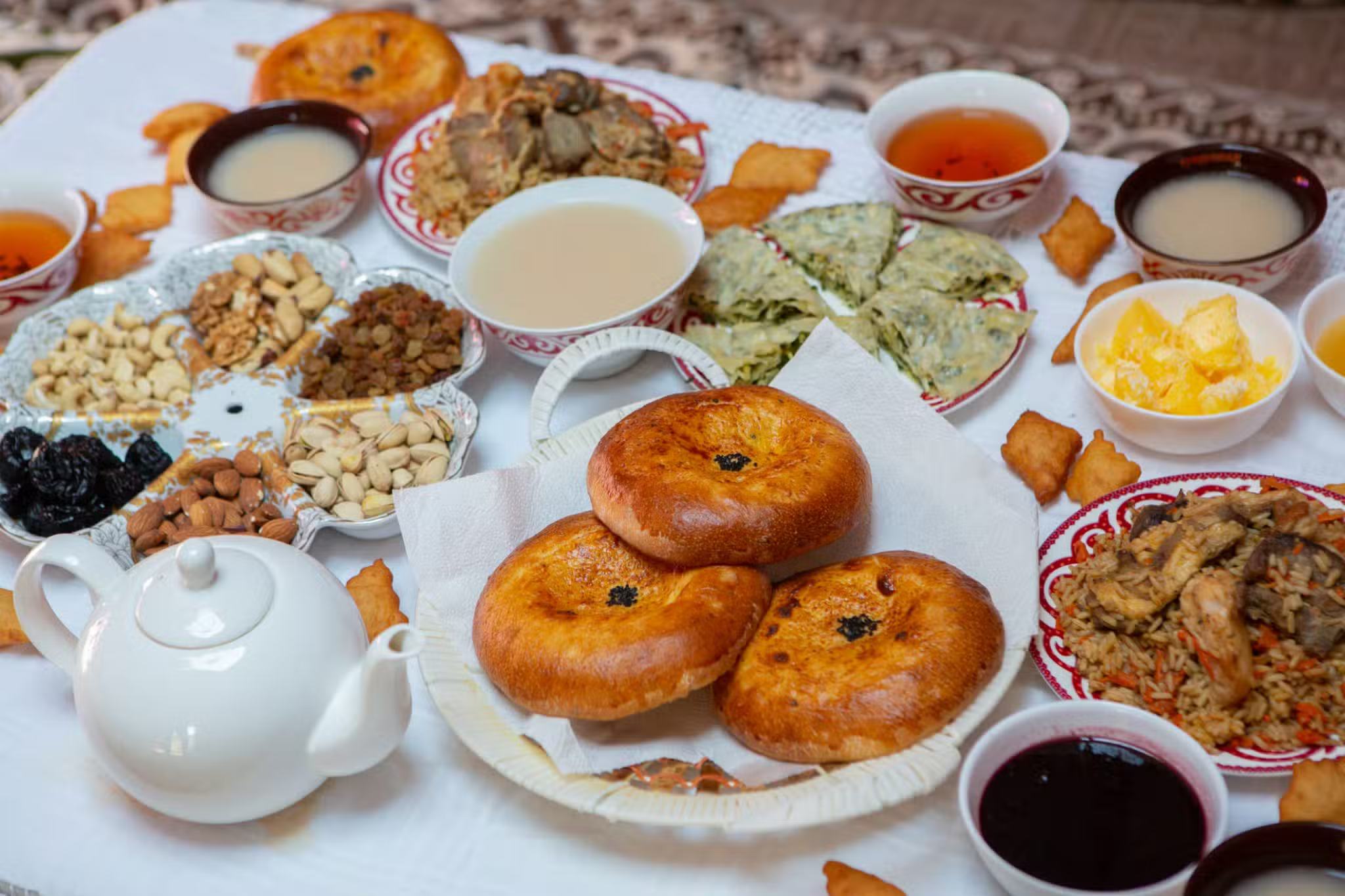
The Kyrgyz Food Dictionary
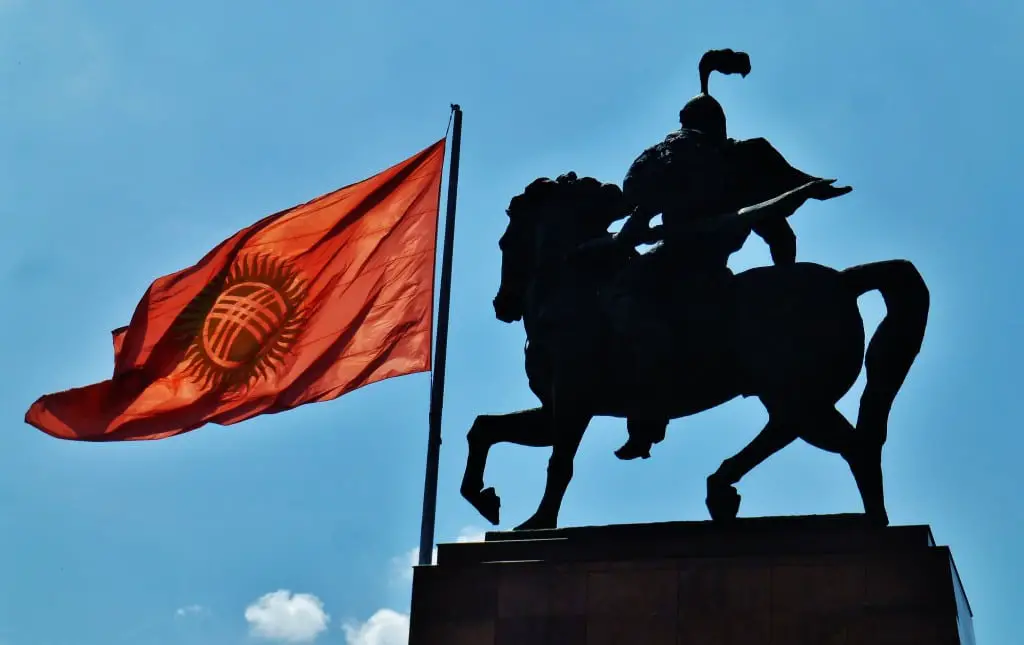
Manas and the Manaschi: Foundations of the Kyrgyz Soul





